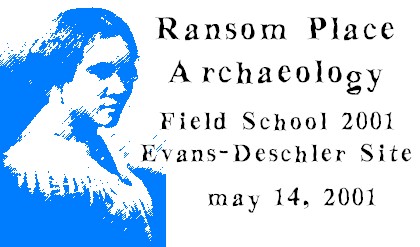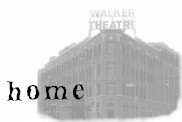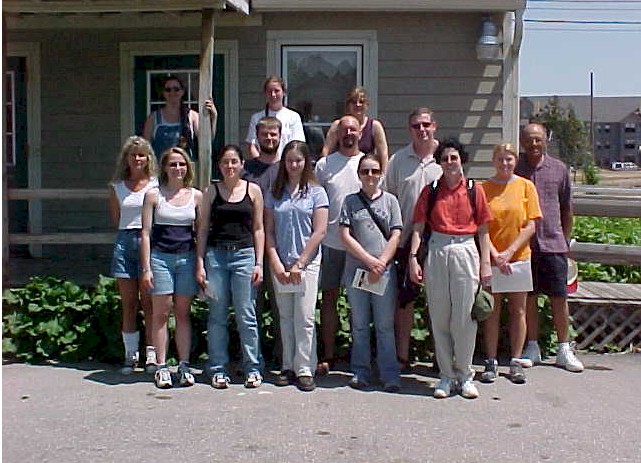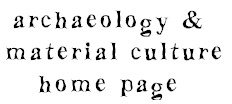

 |
 |
 The
Ransom Place Archaeology Field School began on May 9, and in the first
week we've removed the parking lot that covered the site a week ago and
begun to expose the foundations of the Deschler meat-packing shop.
For more information on the Evans-Deschler site, visit the Field
School 2001 home page. In the next week we will clear around the
foundations and structural features that were exposed by the backhoe and
begin to place excavation units throughout the two yards. The
Ransom Place Archaeology Field School began on May 9, and in the first
week we've removed the parking lot that covered the site a week ago and
begun to expose the foundations of the Deschler meat-packing shop.
For more information on the Evans-Deschler site, visit the Field
School 2001 home page. In the next week we will clear around the
foundations and structural features that were exposed by the backhoe and
begin to place excavation units throughout the two yards.
On May 9 (right) we toured the Ransom Place neighborhood and the IUPUI campus with Thomas Ridley, who was born and grew up on Center Street, which is now under an IUPUI parking lot. Around 1912 and into the 1920's, his grandmother lived on West Street just across the alley from the Evans-Deschler site, so she certainly would have known both the Deschler family and the residents of the Evans boarding house. |
|
|
This Knights of Pythias pin (left) was recovered from deposits near the bulldozed surface, so it is difficult to reliably date; it was recovered in units associated with the Deschler shop. Dr. Kenneth Moder, the Indiana state secretary and historian for the Knights of Pythias, identifies this as a circa 1920-1940 membership pin that identified the wearer as a Pythian Knight. The Order of Knights of Pythias was formed in 1864 and still maintains over 2000 lodges in the US and Canada, including many in Indiana. The Knights had over 456,000 members in 1896, when many Americans were fraternal society members. There were at least five Knights of Pythias Organizations, including the Knights of Pythias, a non-associated Knights of Pythias, the Uniform Rank (regular Knights military branch), the Endowment Rank (a group associated with the Knights' insurance group), and the Black Knights of Pythias (African American). The letters F, C, and B on this pin's face stand for the fraternal organization's mottos of Friendship, Charity, and Benevolence. There were African-American Pythian lodges in Indiana; for instance, employees in the French Lick and West Baden Springs resorts formed Knights of Pythias and Masonic lodges in the early twentieth century (see This Far By Faith: Black Hoosier Heritage), and an African-American Pythian lodge is still active in Fort Wayne. |
 |
If you'd like to see the site yourself, just come by weekdays between 9:00 and 2:30 for a tour of the site. A tour program for the summer has been generously supported by a grant from the Indiana Humanities Council. |
We are always happy to have folks come dig with us for a day or as long as you'd like. We ask that volunteers plan to spend a full dig day with us, which is from 8:30 to 3:00. Pre-teens should be accompanied by a parent or guardian, and you should feel physically up to a day of sweating and modestly strenuous activity. If you are interested in volunteering to dig, please email the Project Director (Paul Mullins) for more information.
 |
 |